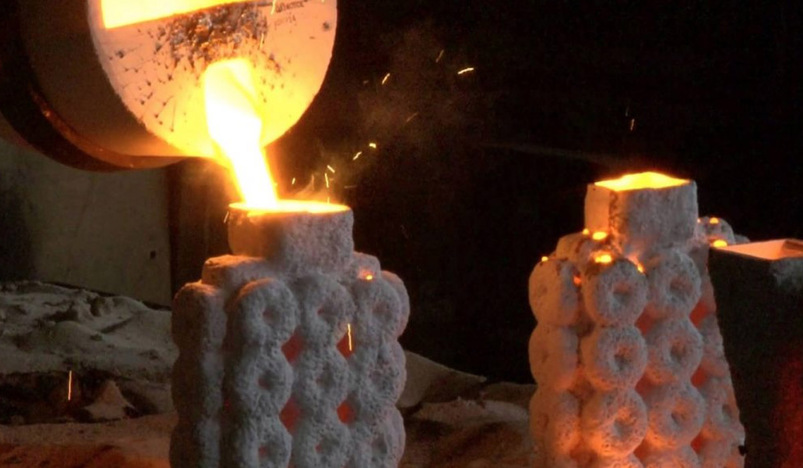
Advantages and Disadvantages of Investment Casting
Investing is a design with refractory materials is the method that gave rise to the phrase "investment casting" according to dawangcasting.com. When compared to other moulding technologies, investment casting produces castings with fine detail and good as-cast surface finishes, which makes it a popular choice. They can also have thin walls and intricate interior tunnels if they are cast with thin walls. Investment casting, in contrast to sand casting, does not necessitate the use of a draught.
These process characteristics can result in castings that are net shape or nearly net shape, which can result in considerable cost reductions for customers in terms of material, labour, and machining. Aluminum, bronze, magnesium, carbon steel, and stainless steel are just a few of the metals that may be used in its construction. Among the parts created by investment casting are turbine blades, medical equipment, handgun components, gears, jewels, golf club heads, and a variety of other machine components requiring sophisticated geometrical design.
Advantages
- Investment casting may be used to create complicated parts that can be cast as a single piece.
- There are no cold shut faults down to a thickness of 0.40 mm (0.015 in) for short or shallow depth features.
- Because of the exceptional dimensional precision of lost wax casting, it is possible to achieve tolerances of 0.075 mm (0.003 in).
- Investment casting, as compared to other production techniques, may provide a superior surface polish without the use of any additional post-processing. RMS Ra is typically between 1.3 and 0.4 micrometer.
- A tolerance of only 0.4 to 1 mm (0.015 to 0.040 in.) may frequently be achieved without the need for any further machining at all.
- The cast would be lacking in flash because there are no separating lines. However, the wax patterns may have lines that separate them from the master mould.
- Aluminum alloy, cast iron, and non-ferrous alloys are the most frequent materials used in investment casting, although the options are nearly limitless. High-temperature alloys are a special focus of the technique.
- Draft on the face of a master die is not necessary, but it would be helpful if it were utilised to manufacture wax patterns in order to speed up the process.
- The combination of excellent dimensional accuracy and extremely smooth as-cast surfaces is possible. If you're working with high-melting-temperature metals that can't be cast using plaster or metal mould, these capabilities are extremely appealing.
- In most cases, the wax used may be recycled and re-used.
Disadvantages
- Investment casting has typically been confined to large production numbers due to the expensive cost of dies required to create patterns.
- Lost wax casting is a more sophisticated process than other metal casting processes such as Die Casting and Sand Casting, and as a result is more expensive than other procedures. In the case of specific items, however, some of the stages can be automated. It can be more expensive than die casting or sand casting, but the cost per unit decreases as the volume of production increases.
- Parts that need cores, have holes smaller than 1.6 mm in diameter, or are deeper than 1.5 times the diameter are more difficult to cast.
- The high cost is also attributable to the need for specialized equipment, the use of expensive refractory materials, and the high cost of labour.
Thus, this is all about the investment casting benefits and demerits. An overview of investment casting process is also discussed above. For any query, you can contact to us.
.jpg)
Qatar Secures Place Among the World's Top 10 Wealthiest Nations
.jpg)
Hamad International Airport Witnesses Record Increase in Passenger Traffic

Saudi Arabia: Any visa holder can now perform Umrah

What are Qatar's Labour Laws on Annual Leave?
Leave a comment